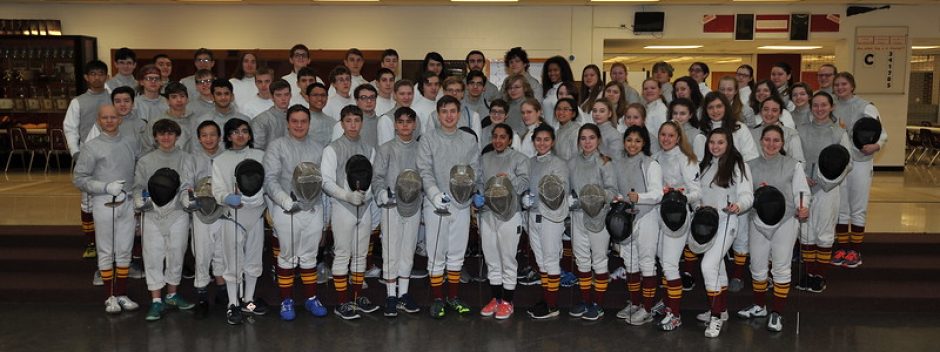Helpful Info:
Is fencing right for you? Read this article
Types of Weapons and Their Differences:
There are 3 types of weapons in fencing: Foil, Epee and Sabre.
Foil – This is the smallest weapon of all. Most fencers start with a foil. The target area for foil is upper body only EXCLUDING arm and neck. Foil fencers must wear a metallic vest called a lame for target area. A lame does not protect fencers but it serves as a target area. Some foil blades are FIE-approved. The FIE-approved blades are usually made from a type of high-end stainless steel metal called Maragine. The FIE foil blades are a little heavier and more expensive but they provide a substantial longer life span than the non-FIE blades. Foil masks were previously the same as the epee masks. As of Aug 1st, 2011, the United States Fencing Association adopted the new rule of requiring a conductive bib on the foil mask for all national level and open ROC tournaments. However, the local tournaments may or may not require the conductive bib for foil fencing. Foil is the most popular fencing sport in the U.S. compared to epee and sabre. FIE foil blades are NOT required in U.S. local or national tournaments but are required for all international tournaments.
Epee – Epee has a bigger guard compared to foil. The blade on the epee weapon is also wider, thicker, and heavier. The target area is from head to toe. Some epee blades are FIE approved. The FIE approved blades are usually made from a type of high-end stainless steel metal called Maragine. The FIE blades are a little heavier and more expensive but they provide a substantial longer life span than the non-FIE blades. Epee blades are usually more expensive than the foil or saber blades. FIE epee blades are NOT required in U.S. local or national tournaments but are required for all international tournaments.
Sabre – Sabre differs from foil and epee in the action of touch. There is much more slashing in sabre fencing while foil and epee fencers mainly pokes the opponents. The target area for sabre is any place above the waistline including arms and head. Sabre fencers must wear an electrical jacket (called a lame) for target area. Some sabre blades are FIE approved. The FIE approved blades are usually made from a type of high-end stainless steel metal called Maragine. The FIE blades are a little heavier and more expensive but they provide a substantial longer life span than the non-FIE blades. Unlike foil and epee, sabre FIE blades are NOT required in domestic or international tournaments. The replacement blades for sabre are also the cheapest among the three.
